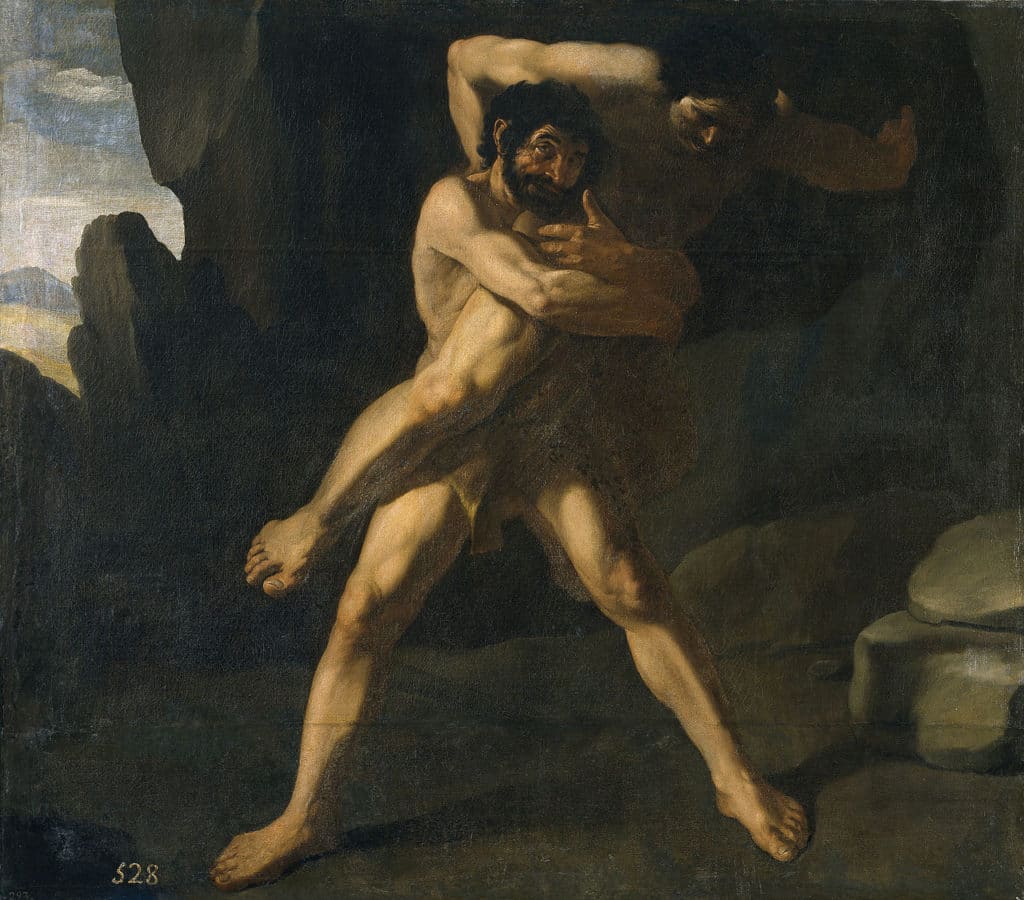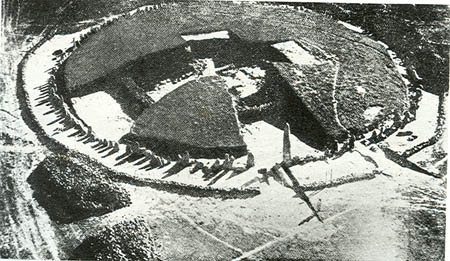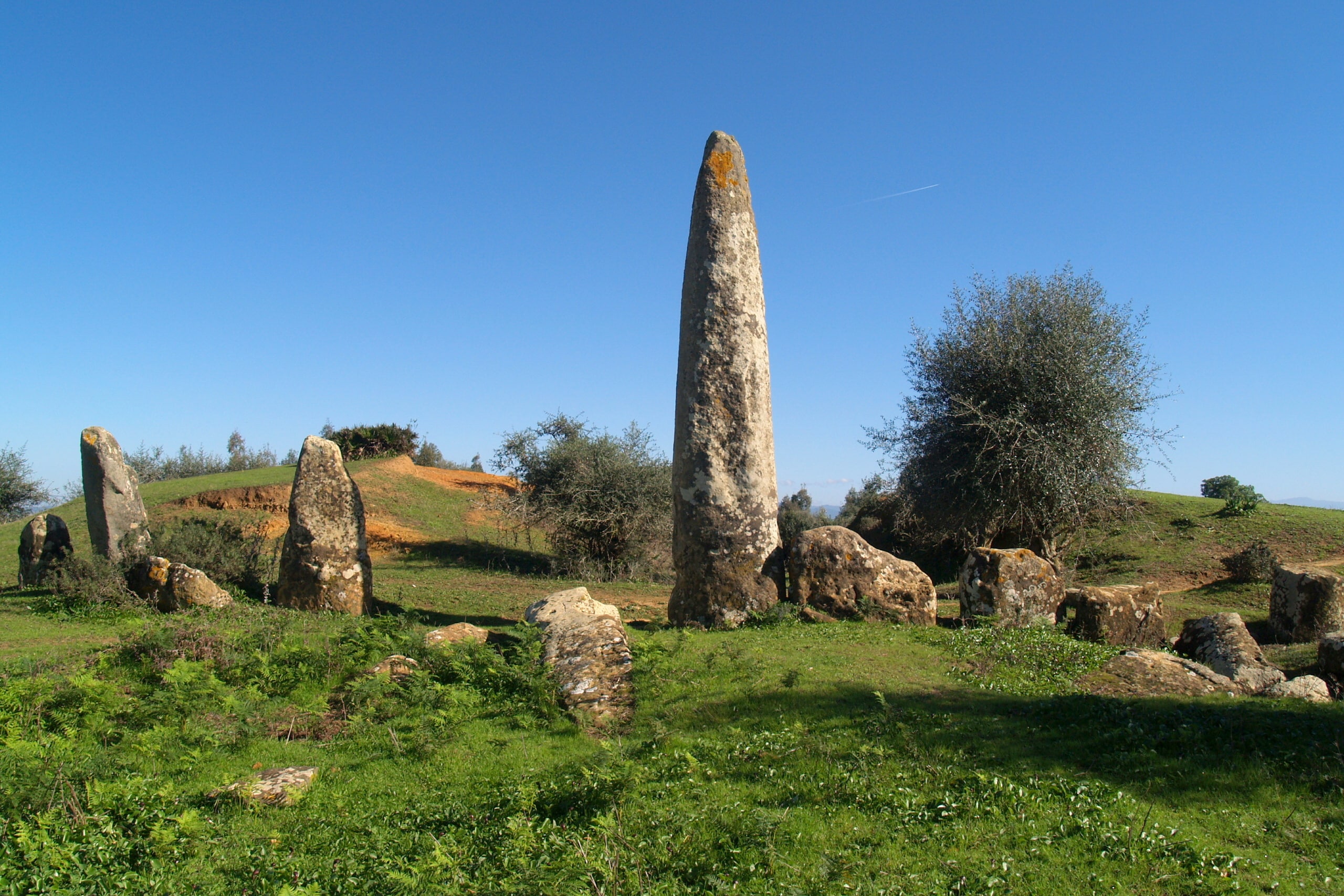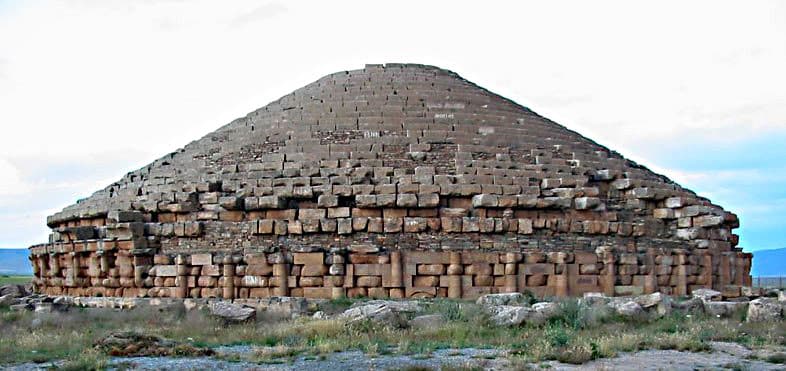[dropcap]N[/dropcap]ot far from the modern city of Azila, Morocco (Zilis in ancient times) is the stone ring of Mzoura. This monument, 58 meters long and 54 m wide, consists of a near-circular ring of 167 vertical monoliths, the tallest of which is 5 m long, surrounding a 6 m high burial mound in the middle. This makes it one of the largest megalithic stone rings in North Africa. Based on nearby structures, the site was dated to the early 5th to mid 4th century BC.
[ads1]
Located around 50 km away from Tangier, Morocco (ancient Tingis), it is possible that the Mzoura burial site is the same one that Roman general Quintus Sertorius had been shown by locals, during a visit to the Kingdom of Mauretania in 82 BC, by the end of the reign of King Bocchus I, or at the start of his son King Mastanesosus’s reign.
Sertorius, according to a legend narrated by Greek-Roman historian Lucius Plutarch, excavated the tomb and found the body of the giant Antaeus, son of Gaia and Poseidon, buried there. Antaeus (or Ɛanti in Tamazight) is also known to Greek mythology through the 12 Labors of Hercules. Dumbfounded, Sertorius, according to the story, performed a sacrifice, refilled the tomb, and joined a local ritual of veneration.

[ads1]
This story, despite being apocryphal, at least in some of its details, confirms two things: first, that Ancient North Africans engaged in ancestor worship, since there are many similar burial mounds throughout North Africa. Secondly, that the person buried there was an important tribal war chief or king.
Spanish archaeologist César Luis de Montalban started excavating the site in 1935. His work however was interrupted when he was arrested during the Spanish Civil war, and he never published his findings. It is expected that the site would have contained burial and funerary chambers, just like the ones that were found at similar, though smaller burial mounds in Sidi
Slimane and Sidi Allal el Bahraoui, Morocco.
[ads1]
Archeologist Miquel Tarradell excavated what was left of the site in the 1950s. He also discovered another smaller stone ring with 16 monoliths nearby. Earlier surveys had suggested that the Mzoura cromlech was somehow linked to the civilizations that built Stonehenge and similar structures in Europe. This hypothesis was however rejected by Tarradell, and later also by Gabriel Camps, who both concluded the mound and its stone ring were built as a burial site, for an ancient Amazigh Moorish chief or king by locals, using local knowledge.
The incomplete excavation by De Montalban damaged the site, and later Islamist fundamentalists vandalized and destroyed some of the monoliths around it.

visible until today
[ads1]
Many other burial sites in Morocco, Algeria, Tunisia and Libya still await excavation.
The distribution of the largest burial mounds, more numerous and bigger in the Western side of the Maghreb (Morocco, Western Algeria), compared to the ones in the Eastern Maghreb, also highlights cultural differences in Ancient North Africa, and together with other data gathered from other sites, such as the ancient city of Lixus, seems to point to the emergence of a distinct political and cultural entity in the Western Maghreb, characterized by a complex social and political hierarchy, known to the Greeks as Maurusia, and to the Romans as the Kingdom of Mauretania.

















